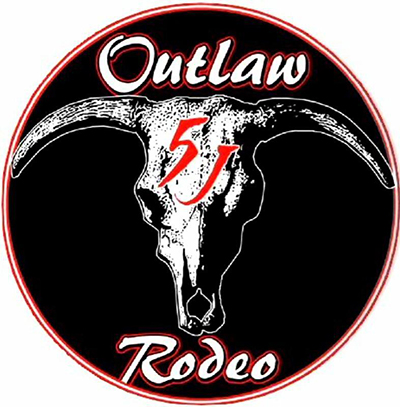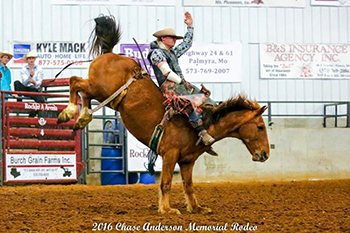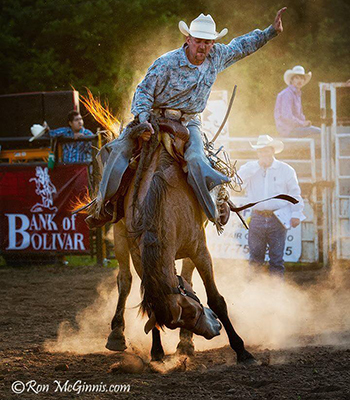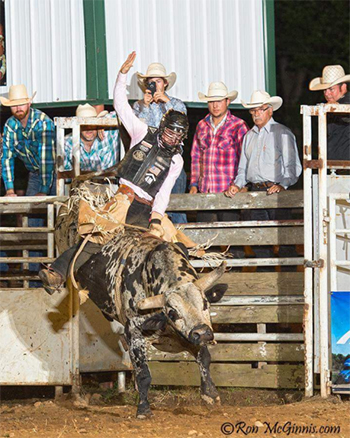Event is Saturday, August 12, 2023 at 7:30 PM in The Arena
Tickets available for Online purchases through Ticketmaster.com beginning June 1
 Outlaw 5J Rodeo Company hosts the ultimate rodeo experience with all the elements to satisfy the traditional rodeo fan, but wild enough to excite the new breed of a RODEO FANATIC!
Outlaw 5J Rodeo Company hosts the ultimate rodeo experience with all the elements to satisfy the traditional rodeo fan, but wild enough to excite the new breed of a RODEO FANATIC!
Since 1988 Outlaw/5J Rodeo Company has entertained more than 2 MILLION fans across the Midwest. The only rodeo with “Empty seats, because we keep the fans on their feet!”
Bares
 Bareback riders endure more abuse, suffer more injuries and carry away more long-term damage than all other rodeo cowboys.
Bareback riders endure more abuse, suffer more injuries and carry away more long-term damage than all other rodeo cowboys.
To stay aboard the horse, a bareback rider uses a rigging made of leather and constructed to meet PRCA safety specifications. The rigging, which resembles a suitcase handle on a strap, is placed atop the horse's withers and secured with a cinch.
Bareback riding has been compared to riding a jackhammer with one hand. It's a tough way to make a living, all right. But, according to bareback riders, it's the cowboy way.
Broncs
 Saddle bronc riding is rodeo's classic event, both a complement and contrast to the wilder spectacles of bareback riding and bull riding. This event requires strength to be sure, but the event also demands style, grace and precise timing.
Saddle bronc riding is rodeo's classic event, both a complement and contrast to the wilder spectacles of bareback riding and bull riding. This event requires strength to be sure, but the event also demands style, grace and precise timing.
Saddle bronc riding evolved from the task of breaking and training horses to work the cattle ranches of the Old West. Many cowboys claim riding saddle broncs is the toughest rodeo event to master because of the technical skills necessary for success.
Every move the bronc rider makes must be synchronized with the movement of the horse. The cowboy's objective is a fluid ride, somewhat in contrast to the wilder and less-controlled rides of bareback riders.
While a bareback rider has a rigging to hold onto, the saddle bronc rider has only a thick rein attached to his horse's halter. Using one hand, the cowboy tries to stay securely seated in his saddle. If he touches any part of the horse or his own body with his free hand, he is disqualified.
Bulls
 Bull riding, which is intentionally climbing on the back of a 2,000-pound bull, emerged from the fearless and possibly fool-hardy nature of the cowboy. The risks are obvious. Serious injury is always a possibility for those fearless enough to sit astride an animal that literally weighs a ton and is usually equipped with dangerous horns.
Bull riding, which is intentionally climbing on the back of a 2,000-pound bull, emerged from the fearless and possibly fool-hardy nature of the cowboy. The risks are obvious. Serious injury is always a possibility for those fearless enough to sit astride an animal that literally weighs a ton and is usually equipped with dangerous horns.
Regardless, cowboys do it, fans love it and bull riding ranks as one of rodeo's most popular events.
Size, agility and power create a danger that makes bull riding a crowd favorite everywhere. Balance, flexibility, coordination, quick reflexes and, perhaps above all, a strong mental attitude are the stuff of which good bull riders are made.



